Working at the Hall
How do you test run a Raleigh Chopper bicycle on a country estate? What does a metalurgist's workshop look like? Where do scientists get their best ideas?
Hinxton Hall stopped being a home and became a place of work in 1954 when Tube Investments Research Laboratories (TIRL) bought the estate, seeing the potential for the space as an ideal environment for science, engineering and industry to collaborate and thrive. Many of the same principles of collaboration, innovation and scientific endeavour embedded within the working environment of TIRL are equally valued and reflected in the Wellcome Genome Campus today. But what was it like to work here?
Here we have collected memories, conversations and reflections of staff from both Tube Investments and Wellcome Sanger Institute who have worked on site and remember the people and environments that shaped their careers.
If you have memories of the Hall you would like to send us please get in touch!
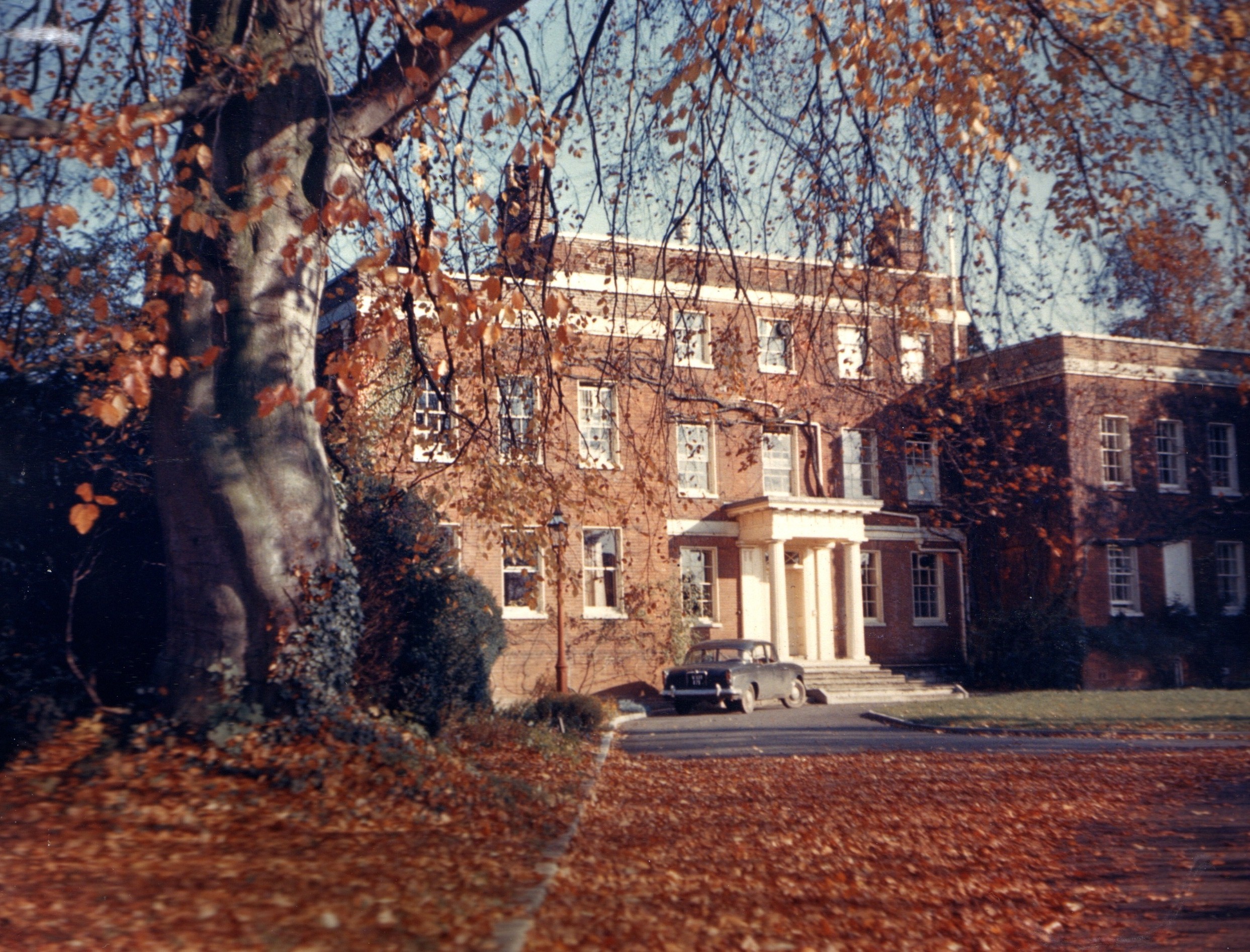
Excitement in the air
Memories from David Melford, former Director of Research, Tube Investments Research Laboratories (TIRL)
“I was told that, when Tube Investments scientists first moved in to Hinxton Hall in 1954 it was a cold winter and some who were there remember much time was spent in collecting firewood so that every available fireplace could be used.
Jim Menter, made the first commercial purchase in this country of the newly developed Siemens Elmiskop 1 (electron microscope), and installed it in the butler’s pantry of the old Hall. The extra thickness of wall intended to protect the family silver also provided the lowest ambient magnetic field on the site and hence the best operating conditions for the microscope.
The freedom to plan one’s own research, coupled with generous support for equipment and facilities, generated a feeling of excitement and euphoria. This was further enhanced in July 1956 when Jim Menter’s paper was published in which, for the first time, the planes of Platinum atoms in a crystal (Platinum Phthalocyanine) were imaged directly using the new electron microscope. This provoked worldwide interest and a stream of international visitors. When I arrived, exactly one year later, this feeling of excitement was tangible.
The laboratory was never a large one. In 1959 it had grown to only 132 in total, scientists and staff. It could reasonably, therefore, be said to be punching above its weight. With these numbers, it was possible to preserve the informality which had characterised it from the beginning. It never grew very much larger and could thus maintain an agreeable working atmosphere. In later years, those who had moved on to work in larger organisations would frequently identify their time at Hinxton as the most enjoyable period of their career.”
The importance of the canteen
Memory from Bill Graham, former Technical Director, TIRL
“I think it was this ability for groups and departments to work harmoniously together that made TIRL so successful. The services departments were also part of the team. Secretarial and personnel support was excellent. Likewise, from the canteen staff. All levels of staff mixed and ate in the same canteen. This also contributed a lot to the easy, friendly, atmosphere.”
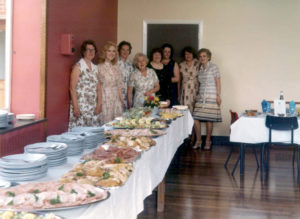
Catering team at TIRL, many of whom were Hinxton residents. Image courtesy of Roy Ellis.
From profit margins to testing Raleigh Chopper bicycles
Memory from, Peter Hiscocks, former Corporate Technical Planner for TIRL and Hinxton resident
“I worked in a small group at Hinxton Hall called Corporate Technical Planning. I had studied as a chemist at Sheffield Polytechnic and then Imperial College and had then done an MBA which focused on ‘operational research’ or how to apply scientific and mathematical techniques to business problems. I was quite young and the junior member of the team so I generally did as I was told. My colleague Mike Pym however, was much more buccaneering and was always undertaking exciting and extravagant projects for new products which sometimes got him into hot water. The biggest of these was for the development of a flat-screen display with touch control which, he said, would enable a small hand-held computer the size of a note-book. In 1983 Mike Pym had invented the iPad twenty five years before it actually happened. However, in this case it was difficult to make it work reliably and when TI Group heard about it the project was cancelled. Our team worked with many TI companies and undertook work that saved them millions either by improving production flows, reducing defects and errors, speeding up machining operations, or, very occasionally, helping with the introduction of a new product.
Product development was an important activity for TI Hinxton Hall to help many of the Group companies. The process was to define the market sector where a new product could be relevant; developing a new product with improved features and functions; testing it to ensure that it would work acceptably.
There were hundreds of such projects and most were successful. Examples of products developed at Hinxton Hall include, wider jet engine rings, more effective shaft seals, better gas cookers, new types of electric water heaters, lower cost car exhaust systems, and new types of bicycle.
Hinxton Hall was actively involved in the engineering and testing of the iconic item on every child’s wish list in the 1970’s – the Chopper bicycle. The original design and manufacturing process was a collaboration between the team at Raleigh Bicycles Nottingham and TI Research Laboratories. In 1969 one of the important tasks was to test it for strength and durability and Keith Wilkinson, a young apprentice engineer at Hinxton Hall, was given the job. He was tasked with cycling around the small roundabout in front of the main entrance to the Old Hall, turning violently; bumping into the kerbs and seeing if it was stable enough to do ‘wheelies’ without being liable to flip-over backwards. Keith remembers the days he spent testing the Chopper to destruction with fondness, “There’s not many young men who get the chance to do that on their job”.
Bill Graham's Aerial photograph of Hinxton Hall, 1978
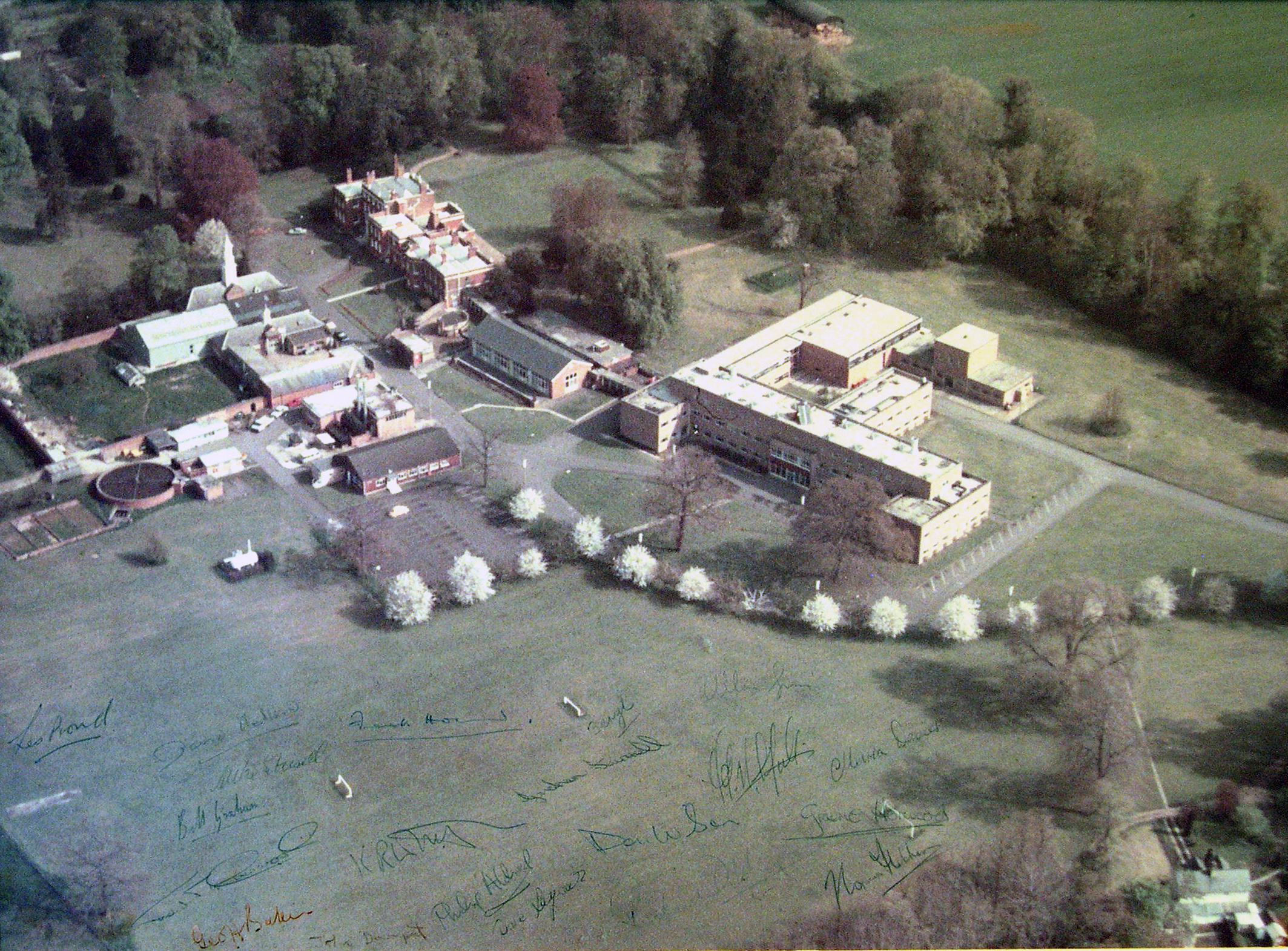
A memorable gift
Memory from Bill Graham, former Technical Director, TIRL
“We needed a memorable gift for our Director Don Pashley when he left for academia in 1979. I recalled an aerial picture of the lab that I had taken the year before. At his leaving dinner, Don was presented with the picture by David Melford, who said “This is an example of the versatility that Don has built into the lab. The photography department printed the large picture and the workshop glazed and framed it.”
In my memory, this quiet cooperation and happy atmosphere together with the freedom to think was what made the lab so innovative and productive.”
Not only did Bill take the photograph but he was also flying the plane.
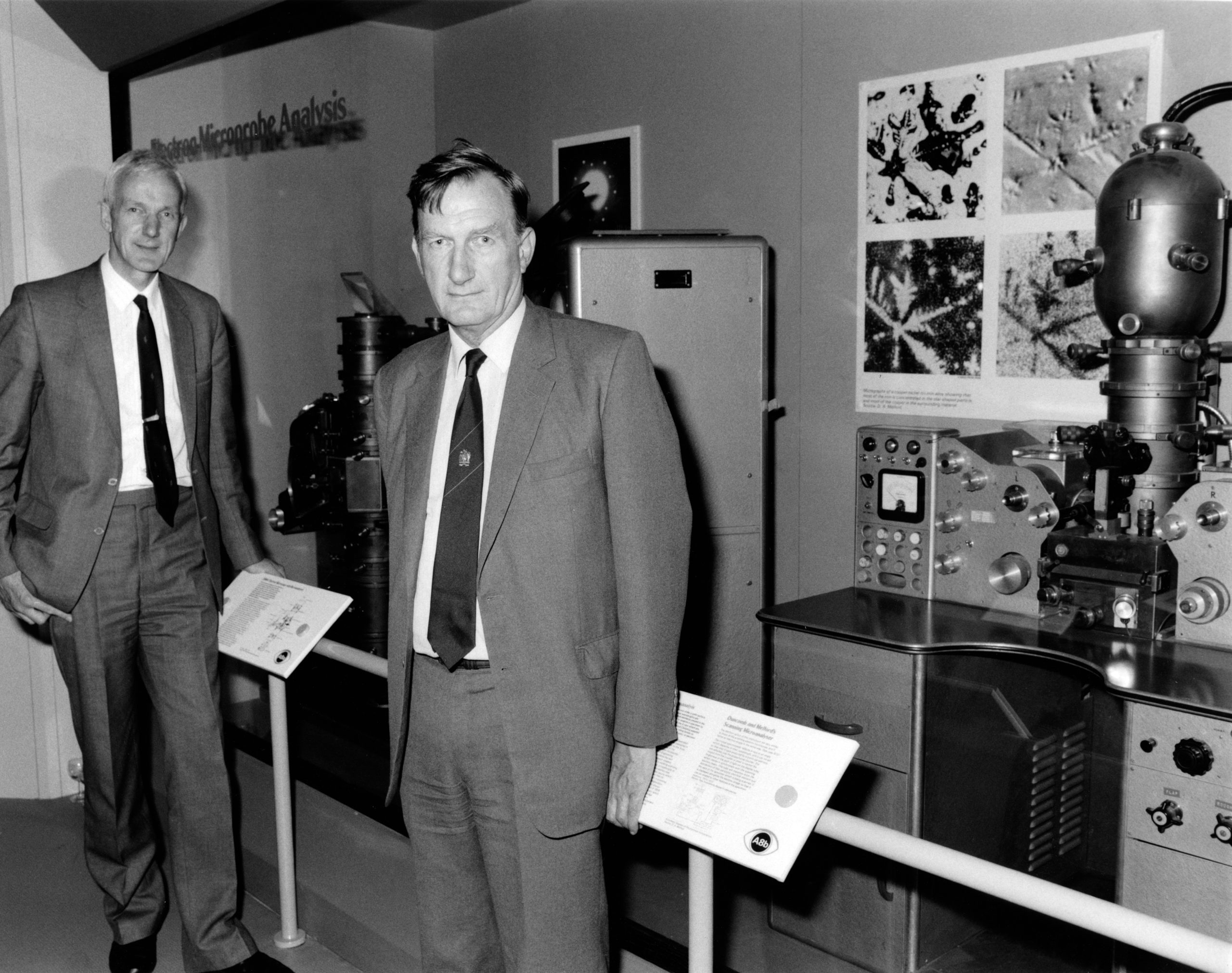
Conversation with Peter Duncumb, former Director and David Melford former Director of Research, TIRL
DM – Tube Investments gave the job of setting up the Laboratory to Phillip Bowden, Reader in Surface Science in Cambridge University. Bowden’s belief was that the core of a good research department was the workshop, and he set up the Hinxton workshop with the best machine tools and the most skilled instrument makers that could be found.
PD – An important aspect to get across was the people, and the linkage between the science and the shop floor.
DM – We had to be bilingual, so that we could communicate on equal terms with Universities or the shop floor in a steelworks.
PD – It was a fascinating place to work for that reason, with all its interconnections. We set up a suitable structure that encouraged communications, not too formal, like the civil service laboratories and not too informal like the university laboritores. So it was a question of the right amount of organisation, interlinking and grouping people but not confining them.
PD – We created three departments, metallurgy, physics and engineering and we worked with close on a hundred companies across Tube Investments.
It was quite a democratic space, everyone coming together at tea and lunchbreaks whether they were the assistants, apprentices or directors. We offered apprenticeships and people would come from places like the Cambridge Instrument Company.
DM – On one occasion I went into the workshop to try my hand at forging. The sight of the chief metallurgist beating hot steel drew several spectators. To my surprise I gained a feeling for the properties of steel that you never learn by just looking down microscopes.
PD – But also was fostered by stuff left over from the war, there was a marvelous market in surplus war equipment. We bought masses. It came in useful, you could pick and choose power supplies.
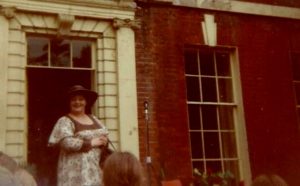
Hattie Jacques outside Hinxton Hall, 1972
A special guest
Memory from The Fordham Family, image and newspaper clip courtesy of Ros Smith, Hinxton residents
‘Tube Investments used to hold summer fetes, they were good fun with fancy dress and horse rides for the local kids. In 1972, the actress Hattie Jacques came to present prizes, and our daughter Caroline presented her with a bouquet.’
A local newspaper featured the event and reported that Hattie ‘praised the community spirit found in small villages and pleaded that it be kept and treasured in what is otherwise an impersonal world.’
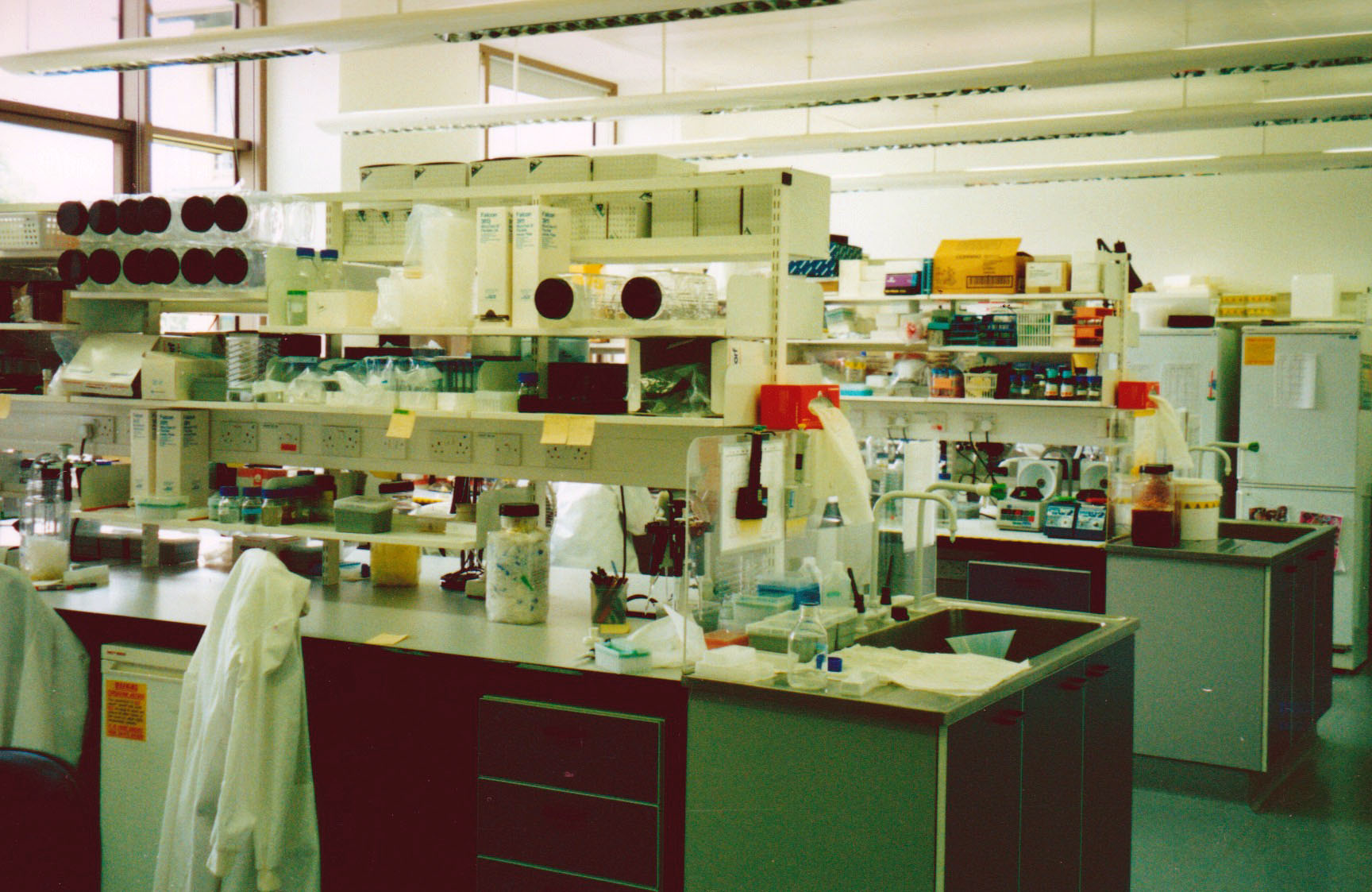
First impressions
Memory from Simon Gregory, an early recruit to the Sanger Centre
On a sunny day and train journey from London, a nervous interview in 1993 with John Sulston and Jane [Rogers] in John’s office overlooking the building entrance to Tube Investments Research Laboratories. First impressions were of a dark brown, featureless brick building seemingly in the middle of nowhere. After joining in 1993, I was greeted by the same building but inside awaited newly refurbished labs where I was the second employee in Human Genetics – the 2 floors of HumGen labs was FULL of unpacked equipment and tremendous promise. Odd add-ons to the TI building for engineering and portacabins for the Medical Research Council.
Lunchtime walks around the Hinxton Hall grounds, through the dilapidated stables that had disused farming equipment and odd things like claw footed baths that must have been ripped out of the Hall to make way for TI labs – everything covered in dust and vegetation. Ill maintained fruit trees in the orchard behind the stables. The Hall itself was full of peeling paint and creaking floors, just a glimpse of the murals on the wall but the colors were faded and images largely indistinct. Wandering around the grounds trying to envisage the vision that John and David [Bentley] had laid before me.
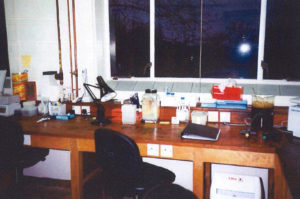
Lab work benches in the early Sanger years courtesy of Sally Kay, Wellcome Sanger Institute staff member
Blossom trees and bonfires
Memories by Sally Kay, Wellcome Sanger Institute staff member
“I joined Sanger back in November 1993 when I had just turned 18. It was my first ‘proper job’ and I joined into the yeast group, which became the Pathogen Sequencing Unit.
I remember the ‘olden days’ very well and have wonderful memories. Starting in the original old building was fantastic, the old wooden benches just made me think I was a scientist.
I remember the original grounds, the entrance to site was a long lane surrounded on both sides by pink and white blossom trees which took you to the original carpark outside by the big tree. It was so pretty. There were green houses by the (what is now) Conference Centre, we had bonfire parties in the orchard with someone running round on the other side of the original lake lighting fire works – we would light the bonfire with something flammable from the lab – all a total H&S no no now!”
Murals in the meetings and croquet on the lawn
Memories from Jane Loveland, an early staff member at Wellcome Sanger Institute
Hinxton Hall used to be the restaurant/canteen for the whole site when I first started, so we’d go there for lunch (this was 2002). We used to be able to book the rooms for meetings and I remember having an ethical review committee meeting in the Pompeian room that was very distracting due to the fabulous mural. It was always a real treat to be able to book that room!
People used to play croquet on the back lawn during the evenings when we had residential workshops.
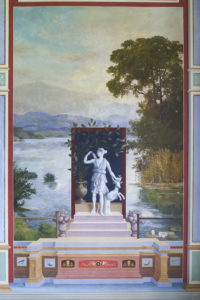
Breakfast meetings with the boss
Memory from Paul Bevan, Wellcome Sanger Institute staff member
My most poignant memories about Hinxton Hall from my early years at Sanger stem from 2001 – 2004. It was during this time that my daughter attended the Crocus nursery at Campus. We used to get to the Campus very early in the morning, about 7:00am, but the nursery did not open until 7:30am. So as a special treat for us both, every Tuesday, we used to go to the Hinxton Hall restaurant since you could get a full English breakfast there as it was open to staff who operated the sequencers around the clock. My daughter became very popular with the staff at the restaurant and it was the high point of the day for one of the ladies who used to run the till. She would love talking with my daughter. For us too it was a lovely way to start the day, sitting in Hinxton Hall, having breakfast and enjoying a bit of father and daughter time before the work day started.
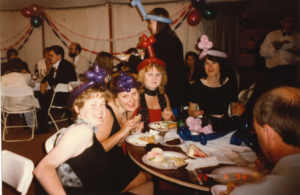
Summer ball 1996, members of the Pathogen Sequencing Unit and partners enjoying the buffet in our finery.
Summer balls at Sanger
Memory and image from Sally Kay, Wellcome Sanger Institute staff member, and an added contribution from a Hinxton resident
Summer balls for Sanger staff in the 1990s were great fun, with live music and all sorts. “We had a big marquee on the lawn out the back of the Hall. We usually had a bouncy castle and bouncy boxing, bungy runs, oh, and a man making balloon hats!”
A Hinxton resident recalls finding a way into the festivities on a couple of occasions. One year John Sulston caught on and asked them to leave so politely that there were no hard feelings.